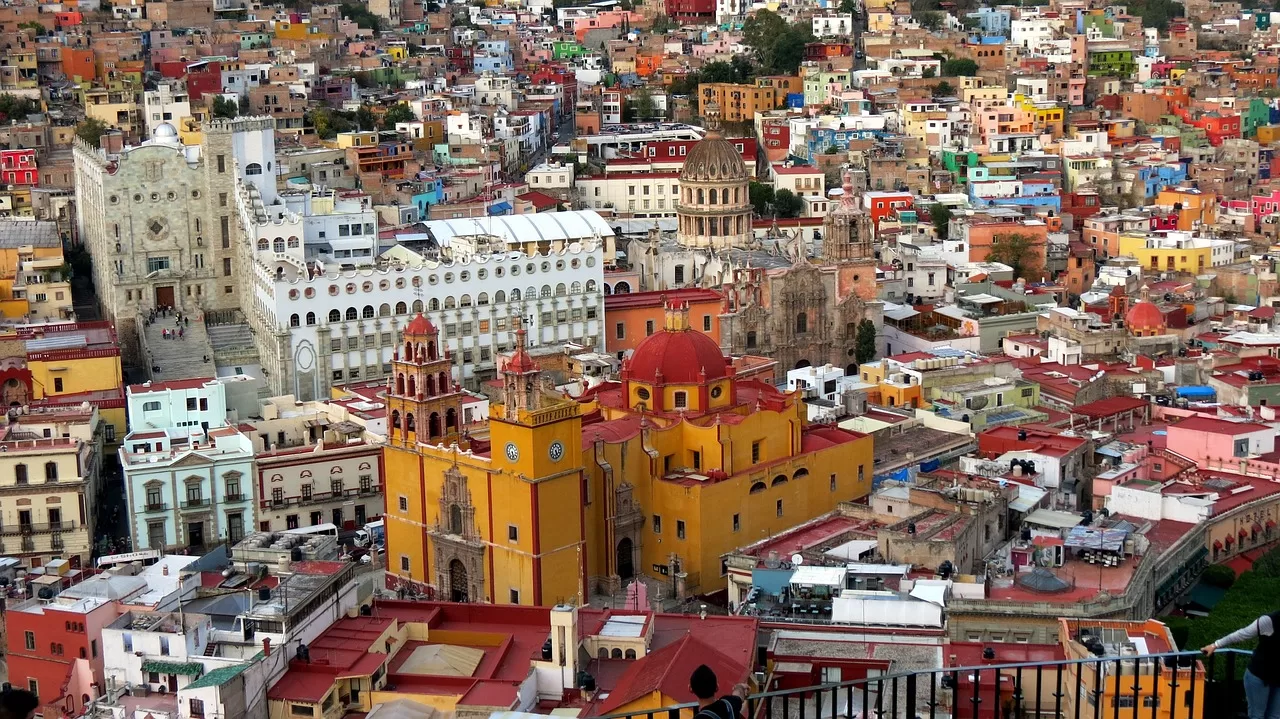
Mexico City, the vibrant capital of Mexico, is known for its rich culture, delicious cuisine, and stunning architecture. But there’s one aspect of the city that often takes visitors by surprise – its high elevation. Situated at an altitude of 7,350 feet (2,240 meters) above sea level, Mexico City is one of the highest major cities in the world. This elevation can have a significant impact on travelers, leading to a condition known as altitude sickness. In this comprehensive guide, we’ll explore the effects of altitude, how to prevent altitude sickness, and what to do if you experience symptoms during your visit to Mexico City.
Understanding Altitude Sickness
Altitude sickness, also known as acute mountain sickness (AMS), occurs when the body struggles to adjust to high elevations. The primary cause of altitude sickness is the decrease in oxygen levels and lower air pressure at higher altitudes. When you ascend to an altitude of 8,000 feet (2,400 meters) or higher, you become more susceptible to experiencing symptoms of altitude sickness.
The most common symptoms of altitude sickness include headaches, dizziness, nausea, fatigue, and shortness of breath. In severe cases, altitude sickness can lead to more serious conditions such as high altitude pulmonary edema (HAPE) or high altitude cerebral edema (HACE), which require immediate medical attention.
Altitude sickness can affect anyone, regardless of age or fitness level. It’s essential for travelers to be aware of the risks and take appropriate measures when visiting high-altitude destinations like Mexico City.
Mexico City’s Elevation

Mexico City’s elevation of 7,350 feet (2,240 meters) above sea level makes it one of the highest capitals in the world. The city is located in the Valley of Mexico, surrounded by mountains that contribute to its high elevation. This unique geographical position offers stunning panoramic views but also poses challenges for visitors who are not accustomed to high altitudes.
Compared to other famous high-altitude cities such as La Paz, Bolivia (11,950 feet or 3,640 meters), Mexico City’s elevation may not seem extreme. However, many travelers still experience altitude sickness in Mexico City due to its combination of high elevation and poor air quality caused by smog and pollution.
Preventing Altitude Sickness in Mexico City
While altitude sickness can be a concern for visitors to Mexico City, there are several steps you can take to prevent or minimize its effects. By following these practical tips, you can ensure a more enjoyable and comfortable experience during your trip.
1. Stay Hydrated
One of the most effective ways to prevent altitude sickness is to stay hydrated. Drinking plenty of fluids, especially water, helps your body adapt to the high altitude and combat the symptoms of dehydration. It’s crucial to start hydrating before your trip and continue to drink water regularly throughout your stay in Mexico City.
2. Limit Alcohol, Tobacco, and Caffeine
Alcohol, tobacco, and caffeine can worsen the symptoms of altitude sickness and dehydrate your body. It’s best to avoid or limit your consumption of these substances, especially during the first 24 hours of your arrival in Mexico City. Opt for hydrating drinks such as water or electrolyte-rich beverages instead.
3. Get Sufficient Rest
Allow your body ample time to adjust to the change in altitude by getting plenty of rest when you first arrive in Mexico City. Fatigue is a common symptom of altitude sickness, so prioritizing rest will help your body acclimate more effectively.
4. Take It Easy
Avoid engaging in strenuous activities or exerting yourself too much during the first few days in Mexico City. The reduced oxygen levels at high altitudes can leave you feeling fatigued, regardless of your physical fitness. Take it slow and listen to your body’s signals. Allow yourself time to adjust before diving into a busy itinerary.
5. Consider Medication
If you’re concerned about altitude sickness or have a history of experiencing symptoms, you may consider talking to your doctor about medication options. Acetazolamide (Diamox) is a common medication prescribed to prevent altitude sickness. However, it’s essential to consult a healthcare professional before taking any medication.
Treating Altitude Sickness in Mexico City

Despite taking preventive measures, some travelers may still experience altitude sickness symptoms. If you find yourself feeling unwell during your visit to Mexico City, there are several steps you can take to alleviate the discomfort.
1. Rest and Hydrate
If you start experiencing symptoms of altitude sickness, such as headaches or fatigue, it’s crucial to rest and hydrate. Find a comfortable spot to sit or lie down and drink plenty of water. This will help your body recover and adjust to the high altitude more easily.
2. Over-the-Counter Medications
Over-the-counter pain relievers like ibuprofen or acetaminophen can provide temporary relief from symptoms such as headaches or body aches. These medications can help alleviate discomfort while your body acclimates to the altitude. However, it’s essential to follow the recommended dosage and consult a healthcare professional if symptoms persist or worsen.
3. Seek Medical Attention
If your symptoms become severe or you experience difficulty breathing, chest pain, confusion, or loss of consciousness, it’s crucial to seek medical attention immediately. These symptoms may indicate a more severe form of altitude sickness that requires immediate medical intervention. In Mexico City, you can visit a local clinic or consultorio for medical assistance. Many pharmacies also offer on-site consultations with doctors.
Exploring Mexico City Safely
Altitude sickness should not deter you from exploring the wonders of Mexico City. With proper preparation and precautions, you can have an amazing experience while minimizing the effects of high elevation. Here are some additional tips to ensure a safe and enjoyable visit:
1. Wear Sunscreen and Stay Protected
Mexico City may not always be hot, but the sun’s rays can be intense at high altitudes. Protect your skin by wearing sunscreen with a high SPF, sunglasses, and a hat when spending time outdoors. This will help prevent sunburn and long-term skin damage.
2. Dress in Layers
Mexico City’s temperature can vary significantly throughout the day, especially in higher elevations. It’s advisable to dress in layers, so you can adjust your clothing accordingly as the weather changes. Be prepared with a light jacket or sweater for cooler evenings.
3. Stay Moisturized
The dry climate of Mexico City can cause dry skin and chapped lips. Pack moisturizer and lip balm to keep your skin hydrated and protected. Apply these products regularly, especially after spending time outdoors.
Mexico City Elevation: Embracing the Heights
Mexico City’s high elevation adds a unique dimension to your travel experience. By understanding the effects of altitude sickness and taking necessary precautions, you can fully enjoy all that this incredible city has to offer. From exploring historic landmarks to savoring delicious cuisine, Mexico City awaits with its vibrant culture and rich heritage. So, embrace the heights, stay hydrated, and embark on an unforgettable journey in the heart of Mexico.




